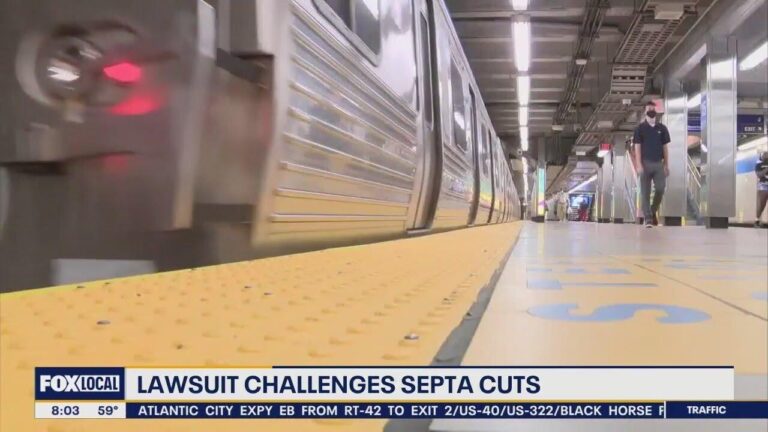Legal Challenge Targets SEPTA’s Service Cuts Over Equity Concerns
New Lawsuit Highlights Disparate Impact of SEPTA Reductions on Marginalized Communities
A coalition of advocacy groups and community representatives has initiated legal proceedings against the Southeastern Pennsylvania Transportation Authority (SEPTA), contesting recent reductions in transit services. The lawsuit asserts that these cutbacks disproportionately disadvantage minority and economically disadvantaged populations, impeding their access to vital destinations such as workplaces, healthcare facilities, and educational institutions. The complaint emphasizes that the majority of service suspensions have occurred in neighborhoods with elevated poverty rates and significant minority demographics, raising questions about SEPTA’s compliance with federal civil rights mandates.
Key consequences outlined in the legal filing include:
- Reduced bus frequency on routes predominantly serving Black and Latino communities
- Longer waiting periods that extend commute durations and jeopardize job retention
- Restricted access to essential medical and social service centers located in central urban areas
Data released by SEPTA comparing service metrics before and after the cuts reveal significant declines:
| Metric | Pre-Cut | Post-Cut |
|---|---|---|
| Average Bus Interval (minutes) | 10 | 18 |
| Routes Serving Vulnerable Populations | 85 | 60 |
| On-Time Arrival Rate (%) | 78 | 65 |
Legal analysts indicate that if the court determines the service changes have discriminatory intent or effect, SEPTA may be compelled to revise its transit plans and enhance community involvement to ensure fair access.
Community Advocates Stress Unequal Burden on Minority and Low-Income Riders
Local leaders and transit advocacy organizations have voiced strong opposition to SEPTA’s recent service reductions, emphasizing that these changes disproportionately impact minority and low-income riders who depend heavily on public transportation for their daily activities. They argue that the cuts exacerbate existing mobility challenges by limiting access to critical routes and increasing travel times, thereby threatening economic opportunities and deepening social inequities.
Supporting their position, advocates have presented data demonstrating the uneven effects across Philadelphia neighborhoods:
- Greater ridership declines in predominantly minority communities compared to other areas
- Longer commute durations for routes serving low-income populations
- Decreased service frequency on lines essential for reaching jobs, schools, and healthcare providers
| Neighborhood | Minority Population (%) | Service Reduction Impact (%) | Average Commute Increase (minutes) |
|---|---|---|---|
| Fairhill | 83% | 27% | 13 |
| Southwest Philadelphia | 76% | 29% | 16 |
| Olney | 80% | 26% | 14 |
Experts Advocate for In-Depth Equity Evaluations in Transit Decisions
Transportation specialists emphasize the necessity of conducting comprehensive equity analyses before implementing any service changes. They argue that evaluations should extend beyond operational metrics and ridership statistics to thoroughly assess how modifications disproportionately affect minority and low-income riders. Without such scrutiny, transit agencies risk perpetuating systemic disparities and limiting essential mobility for vulnerable groups.
Recommended components of these assessments include:
- Detailed demographic studies to identify impacted populations
- Forecasts of effects on employment access and healthcare availability
- Robust community participation to incorporate the perspectives of marginalized riders
Implementing these frameworks is vital to ensuring transit planning remains equitable and responsive to the needs of those most reliant on public transportation.
Calls for Strengthened Community Involvement and Service Restoration
Advocates and community representatives urge SEPTA to enhance its engagement with minority and low-income neighborhoods, ensuring that these communities have a meaningful role in shaping transit policies. This includes organizing more frequent public meetings, launching multilingual outreach campaigns, and establishing advisory committees that reflect the diversity of SEPTA’s ridership. Without such efforts, there is a risk that service reductions will continue to hinder access and economic mobility for vulnerable populations.
Restoring transit services is viewed as essential for achieving transportation equity. Proposed measures include:
- Reinstating critical bus routes that connect riders to employment centers, schools, and healthcare facilities
- Deploying real-time monitoring systems to promptly address service disruptions affecting marginalized communities
- Securing funding for affordable and dependable transit options focused on low-income neighborhoods
| Initiative | Objective | Anticipated Benefit |
|---|---|---|
| Expanded Public Workshops | Increase community participation | Improved transparency and trust |
| Route Reinstatement | Enhance service coverage | Greater mobility for disadvantaged riders |
| Equity Audits | Identify service gaps | Targeted improvements |
Conclusion: Balancing Budget Constraints with Equitable Transit Access
The ongoing lawsuit against SEPTA underscores the persistent challenges transit agencies face in balancing fiscal limitations with the imperative to provide fair and accessible transportation. Advocates maintain that equitable service is fundamental not only to social justice but also to the economic vitality of minority and low-income communities. The outcome of this legal dispute will likely influence future transit policies and community engagement strategies in Philadelphia and similar urban areas nationwide. This case serves as a crucial reminder that transit authorities must prioritize inclusivity and equity when making service decisions.








